Best Outboard Motors in 2024
It’s no secret that outboard motors are evolving at the pace of the Nile crocodile, not only dating back to the early Pleistocene but also minimal updates for the 2019 model year. However, lately, there’s been immense action from nearly all major manufacturers, ranging from Suzuki, Mercury, and Evinrude, to Yamaha.
With a multitude of customers taking reliability for granted and warranties at times stretching up to 6 years depending on promotions, the new engines are pushing progress on two fronts: efficiency and horsepower. With outboards powering an increasing number of large boats, new options are cropping up for buyers on the quest for 350 horsepower and above.
Moreover, with the fuel economy and range constantly being an issue, it’s no surprise that new designs are aiming to hit their torque and horsepower numbers while squeezing every ounce of fuel as far as it’ll go.
When it comes to low-horsepower outboards, in particular, electric power is not only becoming the go-to option but also viable. Therefore, if you don’t need to push a 30-footer or cover 40mph, small electric models will get the job done. They are portable, self-contained, and quiet, rolled into one.
Keeping that in mind, we’ll explore the best outboard motor options that will give you a reason to repower your boat with something new, quiet, and clean. Read on!
Mercury Racing 450R
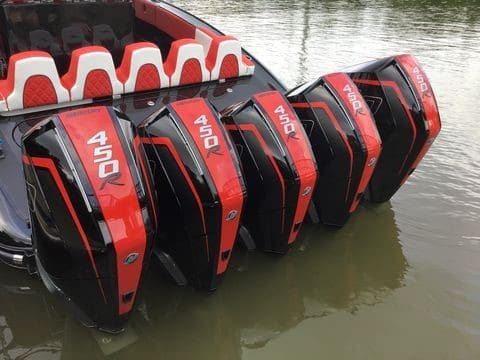
After Mercury launched its new V8 4.6-liter Verado, it was only a matter of time before they stepped up the horsepower by a few notches. They did so with the 450R that ushers in a 2.4-liter double-screw supercharger coupled with a Sport Master Gearcase that is readily available.
You’ll be impressed by how light the Mercury Racing 450R is, weighing 702lbs. Furthermore, it comes in a shaft that is 20 inches long and has remarkably top-speed connotations for bass boats.
Backed by a 3-year warranty, you can rest easy knowing that the Mercury Racing 450R is not unduly stressed, regardless of its amazing power rating. Additionally, the high horsepower rating is courtesy of the 89-octane gas pump.
Therefore, this saves you the hassle of trailing your bowrider over to the nearest drag strip to fill up on 100-octane racing gas. For outboards, the total horsepower is restricted by what you can physically fit at the back of your boat. For instance, if your boat has a quad that ranks in the 350s, repowering it with the Mercury Racing 450R is closely similar to adding an entire engine.
G2 Evinrude 150 E-TEC
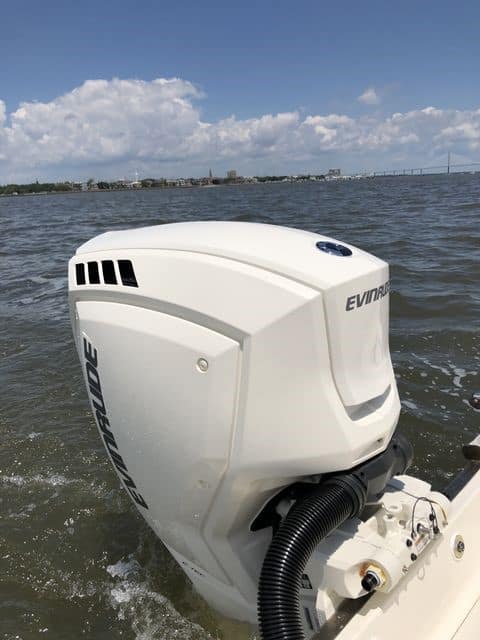
Although there’s no denying that 4-cylinder and 4-strokes have become the industry standard in the power category, Evinrude takes an entirely different route with the G2 150 E-TEC.
With a 3-cylinder, 1.9-liter directly-injected 2-stroke, the G2 Evinrude 150 E-TEC forgoes the V6 G1’s architecture for improved efficiency. As a result, you can delight in a 12mpg at a faster-trolling speed on a boat that is 20-feet long.
The best outboard motor with a horsepower of 150 can be deployed on a broad range of boats. The G2 is regulated by an external hydraulic, tiller, mechanical steering cable, and integrated power steering.
According to Evinrude, the onboard oil tank below the cowling should get the job done with utmost efficiency for up to 60 hours, which is the duration of a regular boating session. Moreover, the maintenance interval for G2 150 E-TEC is about 500 hours or five years.
Torqueedo Travel 1103 CS
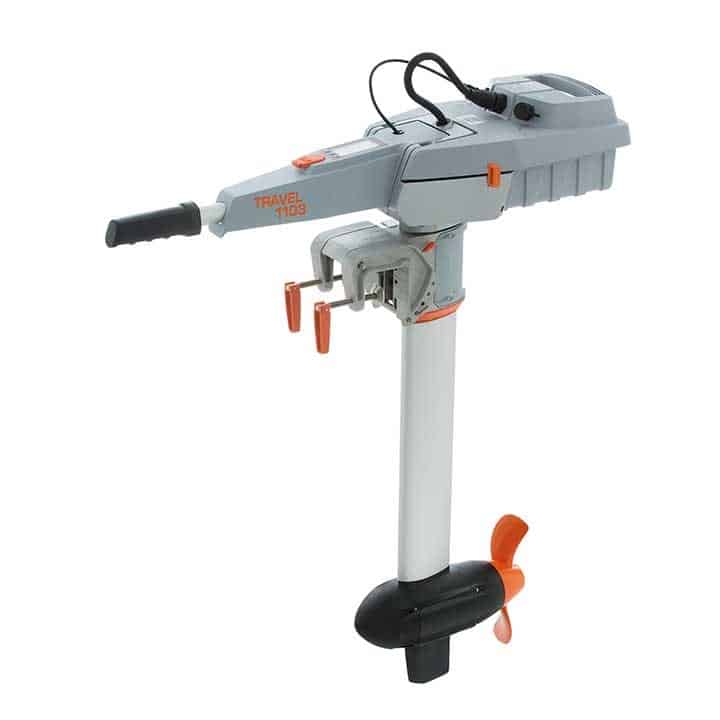
While this brand churns out large outboards with the equivalent of 80 horsepower, it’s no secret that a Deep Blue motor solely targets the affluent folks for their yacht tenders and deep-pocketed people in the import industry that may require a silent Zodiac.
Although one of these motors with an 80 horsepower coupled with their BMW-developed battery packs will set you back over tens of thousands of dollars, the Torqueedo Travel 1103 CS will help you cut down on costs. Starting at about $2700, it’s the best outboard motor that weighs under 3300lbs and cab find a home on any boat.
Powered by a 915WH lithium battery, this unit can comfortably operate for up to 6 hours at half-throttle, which indicates a range of 18 miles, depending on your boat. Aside from sailboats and dingies, the 1103 CS makes an amazing kicker or trolling motor on a compact powerboat.
After all, it weighs below 40lbs and makes 33dB of noise. Additionally, you’ll be impressed to discover that you can prolong your range with solar power charging while underway.
Yamaha Offshore XTO
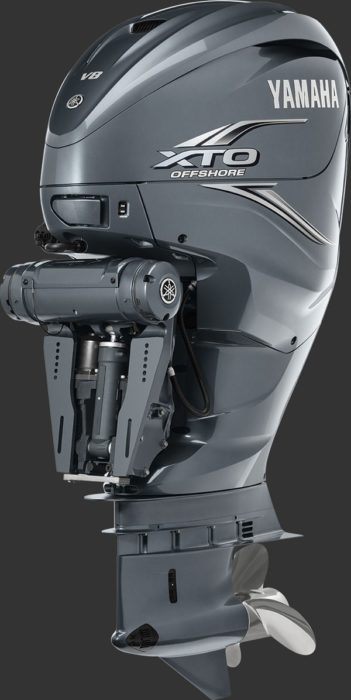
In recent years, center consoles have stretched past 50 feet with battle-wagon express boats progressing from diesel-powered to outboards. Therefore, it’s no surprise that Yamaha constructed an engine geared for boats that are more than 50 feet long.
An example is the Offshore XTO, with a whopping horsepower of 425. As a V8 with a capacity of 5.6 liters, this unit is truly a beast with its integrated power steering and can weigh up to 999lbs.
Nonetheless, this doesn’t deter builders from hanging up to 5 of them on the stern, as displayed on a Scout at the latest Miami show.
Yamaha’s performance report states that the quad Offshore XTOs will stretch a 41-feet Regulator center consoles to 63.7mph. Additionally, you have free rein to run a 200 horsepower twin on one 25-foot XTO Sportsman at up to 55mph and 2.83mpg on a cruise of 29mph.
Suzuki DF350A
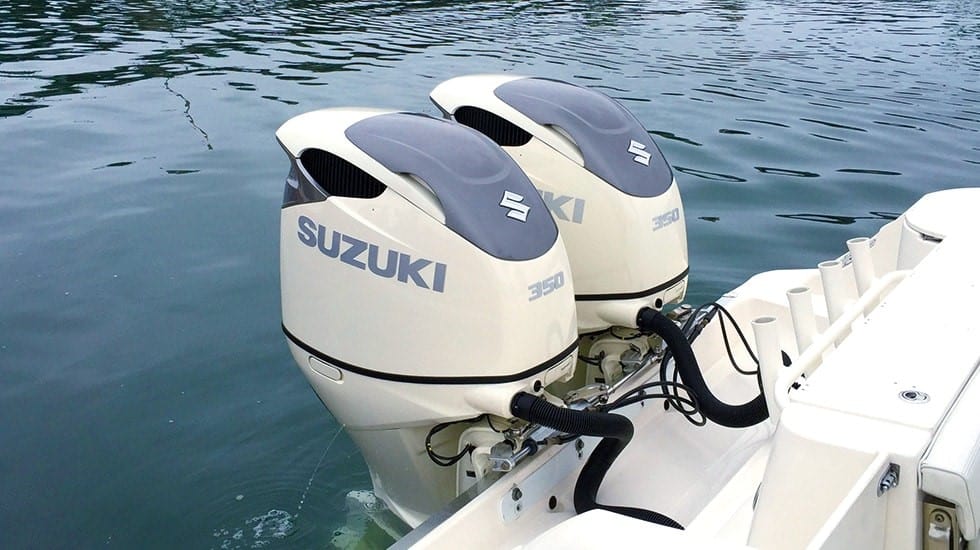
Although Suzuki is solely known as a mainstream value brand, models such as the DF350A prove their intent on competing in the top range horsepower (hp) game.
As a large 4.4-liter V6 that is aspirated naturally, the Suzuki DF350A utilizes double counter-rotating propellers to elevate hookup while negating the impact of torque. The latter point is more applicable to one-engine boats, where this outboard motor is an economical option in terms of fiscally and efficiency.
For instance, on a Sea Pro 239, this outboard motor pushed it to 54.2mph and achieved 3.35mpg at cruise speeds that fall in the 20s bracket.
Buyer’s Guide: How to Choose the Best Outboard Motor
Selecting the ideal outboard motor for your boat revolves around determining the intended purpose behind your purchase. Therefore, we’ve rounded up a few considerations to keep in mind when taking your pick from the wealth of options.
Two-Stroke or Four-Stroke
For casual anglers or anyone learning how to fish, a two-stroke motor will get the job done. Not only is it more affordable but also easier and cheaper to repair. Contrarily, the four-stroke counterparts deliver impressive fuel efficiency and are an ideal alternative for boaters that need a powerful motor capable of covering longer distances.
It’s worth noting that the better-skilled manufacturing coupled with the availability of better quality materials have successfully eradicated the old size along with noise variations between four-stroke and two-stroke engines.
Horsepower (HP)
Engines ranging from 50hp to 300hp can excellently power the best outboard motor. The key to choosing the most ideal option for you is factoring in the type of horsepower that perfectly fulfills your desires. An incredible way to do so is by computing your boat’s expected total weight, which includes accessories, gear, passengers, and fuel. It’s only after doing this that you’ll gain clarity on your desired cruise speed and the distance you plan to cover on a regular day. You can then determine the ideal horsepower range for you.
Size
The size of your boat is an essential aspect to consider when choosing an outboard motor. Putting a motor that’s too small on a big boat can cause the engine to wear out prematurely or usher in issues with safety and your boat’s plane. Contrarily, putting a large motor on a small boat can cause overheating issues and burnt spark plugs.
Shaft Length
Given that small boats feature small transoms, you’ll need a short shaft length. Although some small boats come with bigger transoms, they require outboard motors with long shafts. Nonetheless, most small boats won’t call for this.
To determine the ideal shaft length for your boat, measure the height of your boat’s back-end from bottom to top and right at the center of the stern. Your shaft length should tally with this measurement. If you’re one or two inches off, there’s nothing to worry about.
However, if you’re five or more inches off, then there’s a problem, so match your transom height as closely as possible to the motor shaft.
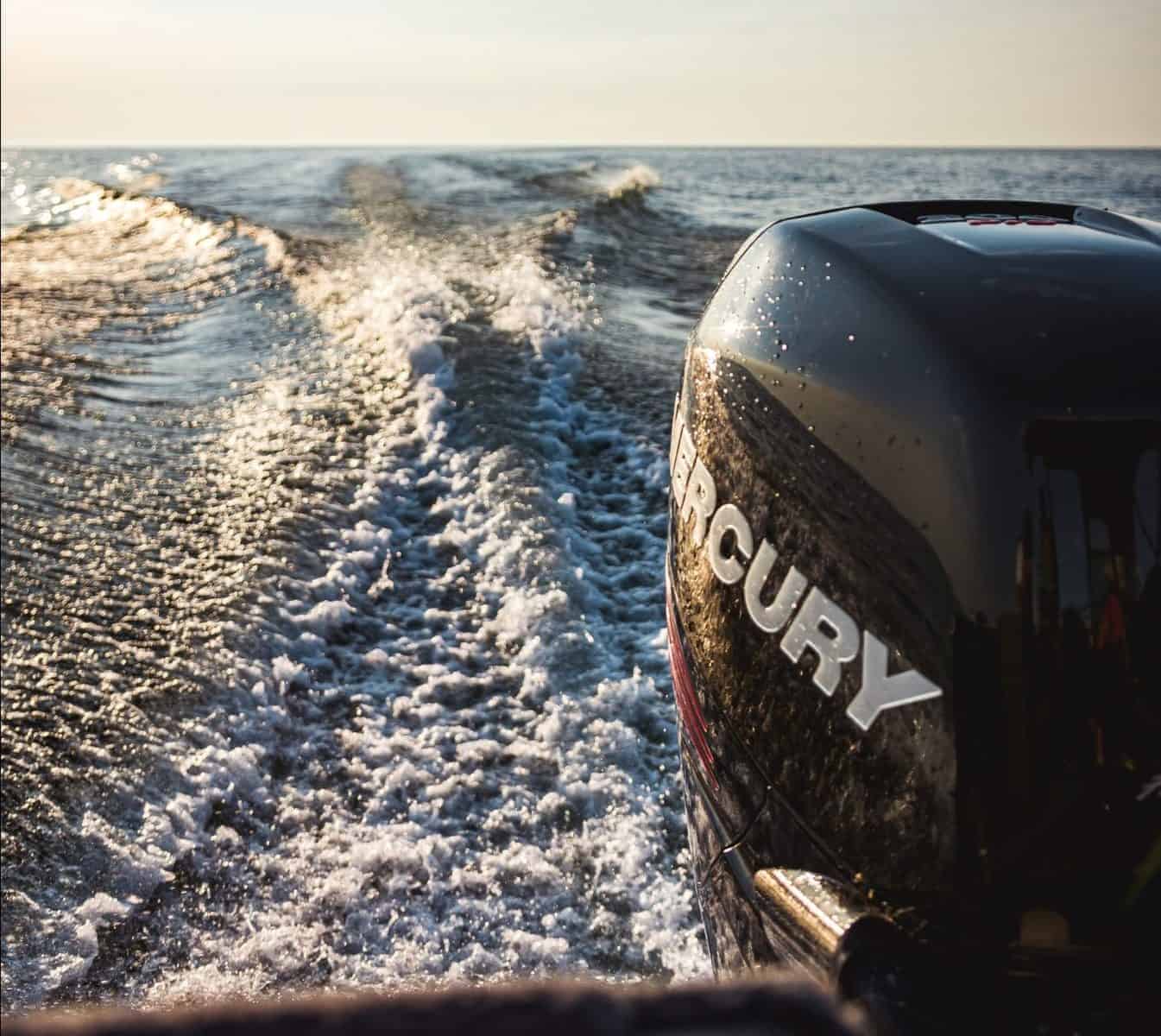
Weight
Choosing the best outboard motor goes beyond the power and torque. One of the most crucial factors when selecting between a six and a four-cylinder motor is your boat’s weight. A lighter boat is more compatible with a 4-cylinder counterpart.
Therefore, with a bay or center console boat of fewer than 22ft, a 4-cylinder would be a great fit. Additionally, a lightweight console with double engines is compatible with a four-cylinder motor.
On the other hand, if your boat is bigger, consider a motor with a wider arc for the torque curve. As a result, the engines don’t become overtaxed when your boat is at planing speeds.
Conclusion
Regardless of the aquatic adventures, you embark on using your boat, the best outboard motor such as the ones discussed will usher in more efficient, smoother, and quieter rides.
Furthermore, by considering the ideal size, shaft length, type of engine, and other aspects, you’ll be satisfied for years down the road.
Categories: Boats












2 Comments
Jesse A. Rieber on March 26, 2022
I’m still stuck in decision land. I have a 2007 Guardian (Whaler) 19′. It has a 150 Johnson Fitch. While I will do some fishing, mostly I’m going from one location to another. It will be used in saltwater Nantucket Sound. I am lookoing for direction in terms of repower.
mark hawkins on February 6, 2023
Thank you Chris …..great information.
I have a 1994 Whaler Outrage 17, and looking for the best fit.